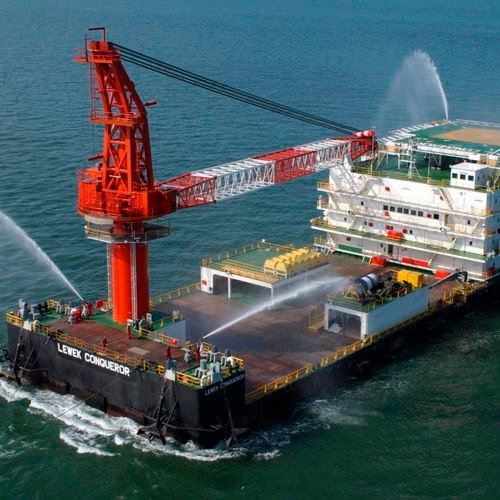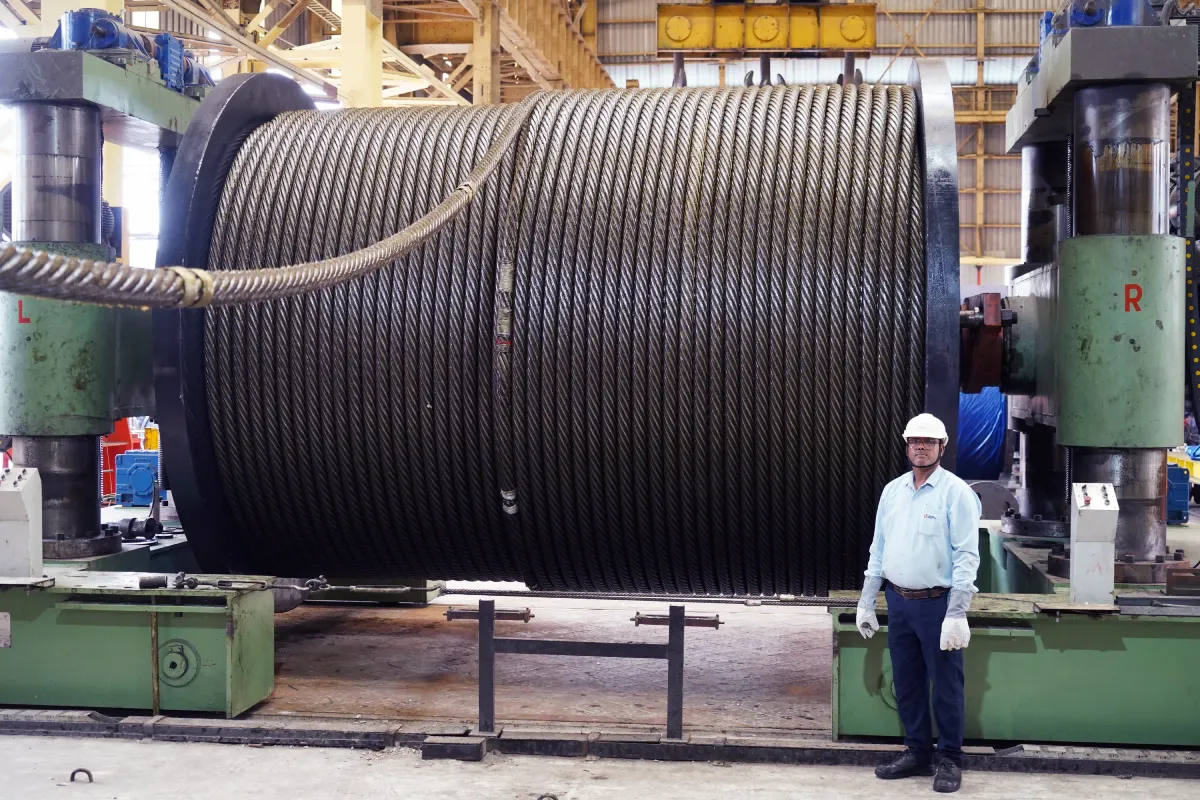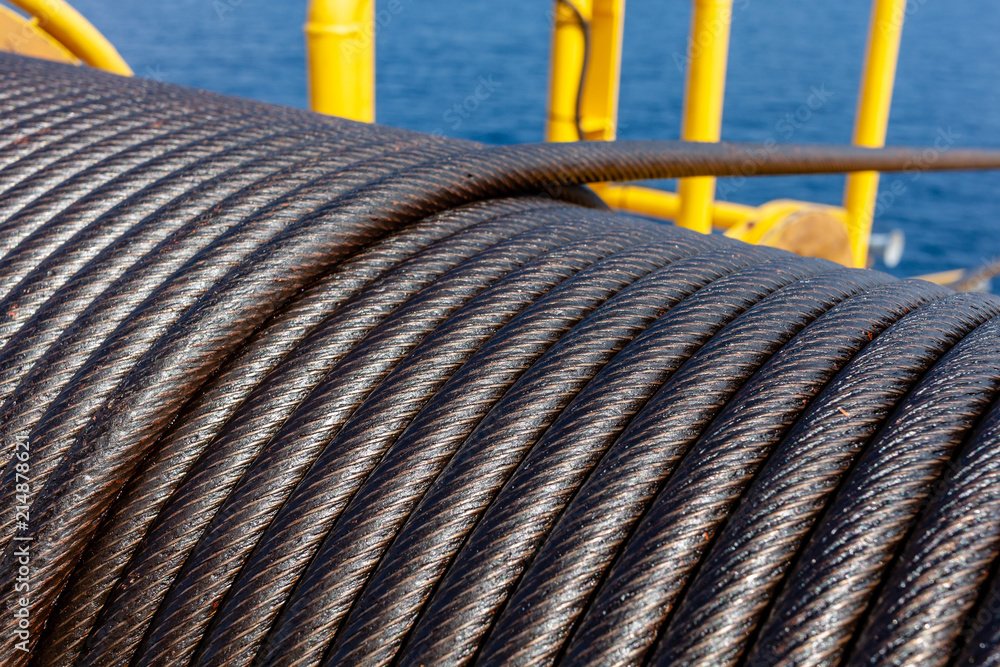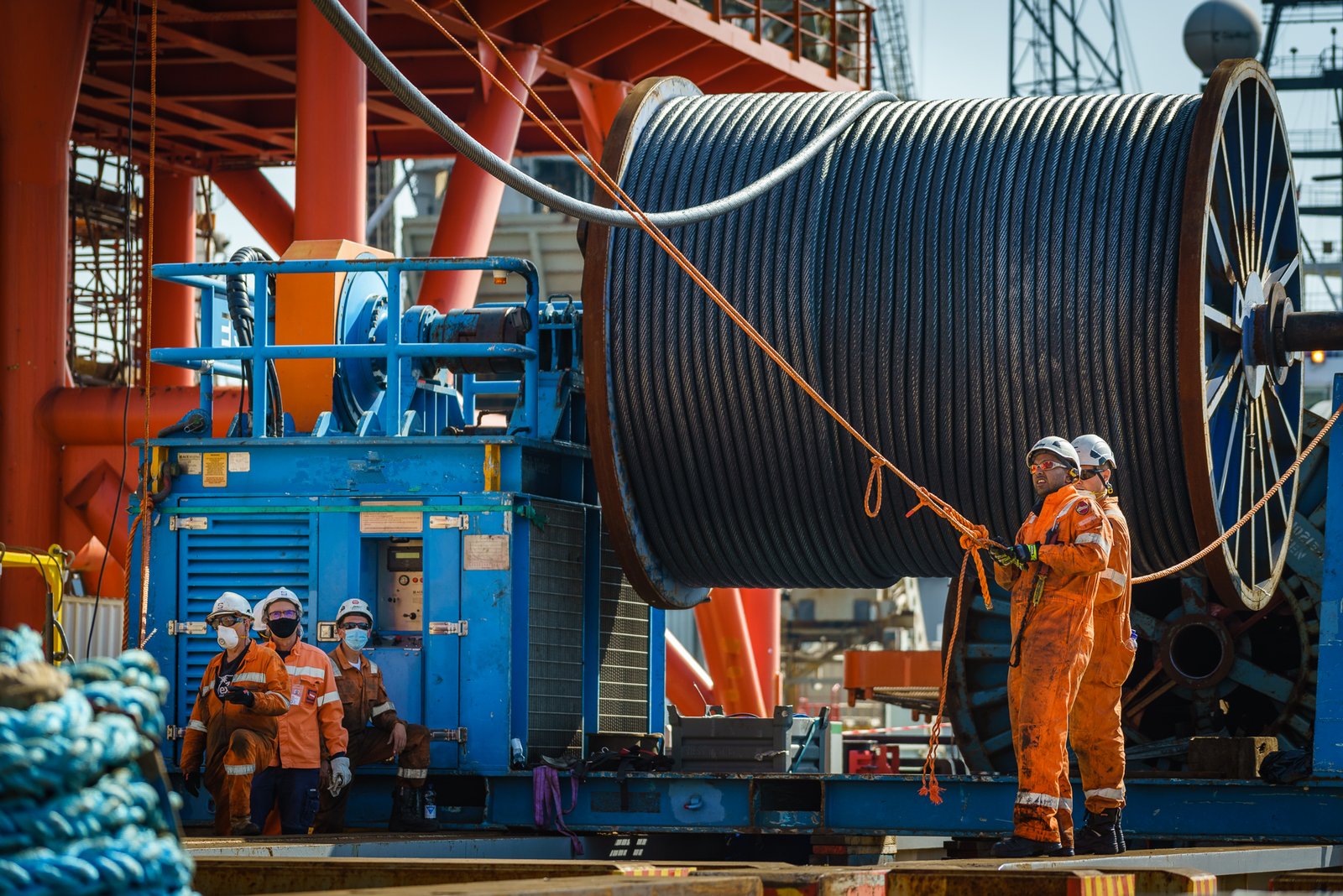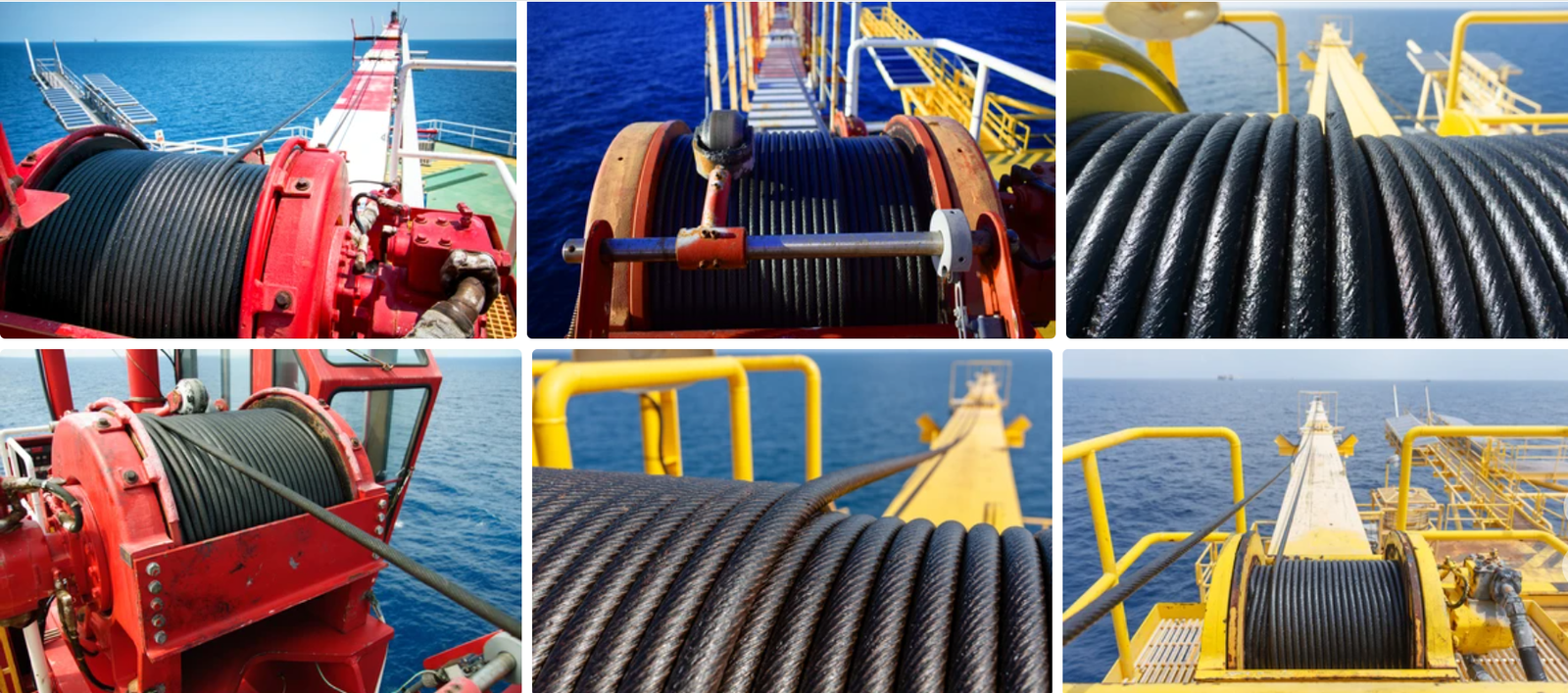Choosing the wrong marine wire rope leads to failure at sea. This compromises safety and increases costs. But you can select the perfect rope for your needs every time.
The best materials are galvanized steel, stainless steel, and synthetic fibers. Each is suited for specific jobs like mooring, lifting, and towing. Your choice depends on corrosion resistance, strength, and budget.
I remember a new client whose mooring lines failed too early. They chose a cheaper, uncoated rope to save money. This simple mistake cost them dearly in replacements and downtime.
Why is Choosing the Right Material So Crucial for Marine Environments?
The sea is a harsh environment. Salt, water, and constant movement test every piece of your equipment. Your wire rope is your first defense against these powerful elements.
The right material prevents quick corrosion from saltwater. It resists fatigue from changing loads and ensures safety. It directly impacts the rope’s lifespan, reliability, and total cost on any ship.
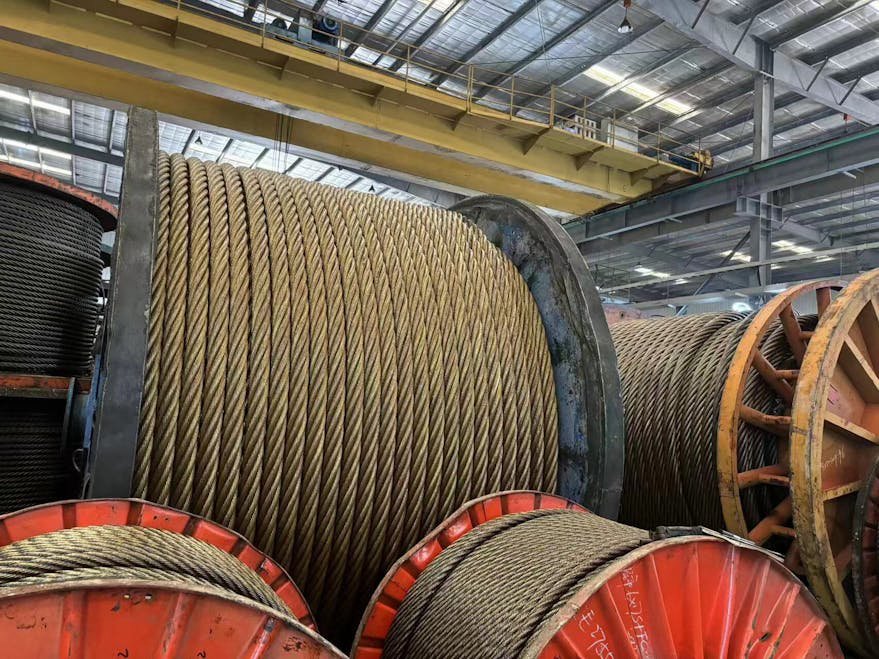
Dive Deeper: The Forces at Play
When I assess a rope’s suitability, I think about three main factors. It’s a balance between fighting the environment, handling the load, and managing the cost. Ignoring any of these can lead to problems.
Corrosion: The Silent Killer
Corrosion is the biggest enemy of wire rope at sea. Saltwater and humid air will attack unprotected steel relentlessly. It doesn’t just look bad; it weakens the rope from the outside in. Even worse, moisture can get trapped inside the rope. This causes internal corrosion, which is invisible during normal checks.
I have seen ropes that looked fine on the outside but were dangerously weak inside. This is why material choice and protective coatings are not optional. They are essential for safety.
Strength vs. Flexibility
A marine wire rope must be incredibly strong. But it also needs to be flexible. It has to bend around sheaves on a crane or drums on a winch without breaking. The material and the way the wires are twisted together determine this balance.
- Strength: This is the breaking load. A rope for a heavy crane needs a very high tensile strength.
- Flexibility: More, smaller wires in a rope make it more flexible. But this can sometimes reduce its resistance to abrasion.
Finding the right balance is a science. For example, a crane rope needs to be flexible enough to run smoothly but strong enough to lift tons of cargo safely.
Cost: Upfront vs. Long-Term
It’s easy to look at the purchase price. But a cheaper rope that you have to replace three times costs more in the long run than one expensive, durable rope. Think about the total cost of ownership.
| Factor | Lower Upfront Cost Rope (e.g., Ungalvanized) | Higher Upfront Cost Rope (e.g., Stainless/Impregnated) |
|---|---|---|
| Purchase Price | Low | High |
| Service Life | Short | Long |
| Maintenance | High (Frequent lubrication needed) | Low (Sealed and protected) |
| Replacement Frequency | High | Low |
| Total Cost Over 5 Years | Can be very high | Often lower |
I always advise clients to invest in the right rope from the start. It saves money, time, and reduces risk.
What Are The Most Common Materials Used For Marine Wire Ropes?
When you look around a port, you see many different ropes. Each one is designed for a specific job. Let’s look at the most common materials we use in my factory and across the industry.
Galvanized carbon steel is the workhorse for general use. Stainless steel, especially grade 316, offers the best corrosion resistance. High-performance synthetic ropes provide very high strength with low weight.
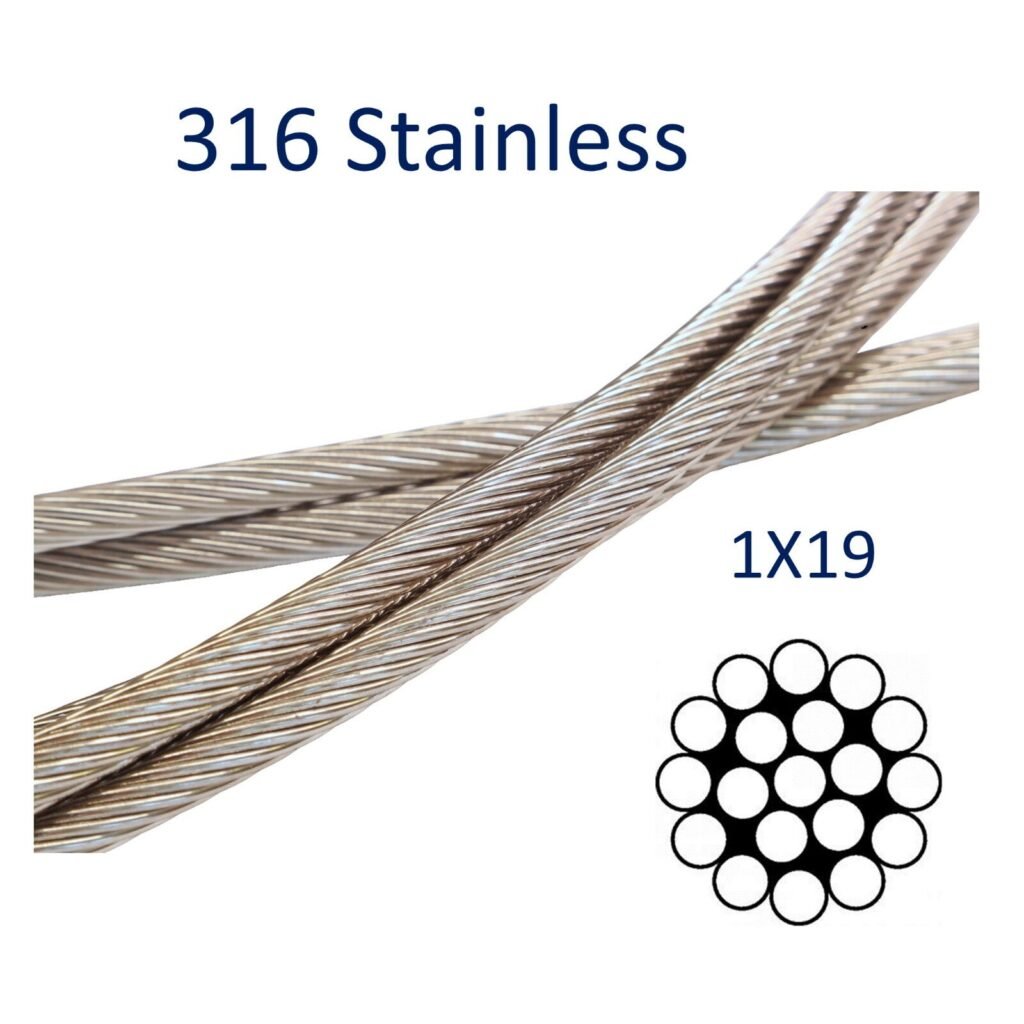
Dive Deeper: A Material Breakdown
The choice of material isn’t just about fighting rust. It’s about strength-to-weight ratio, abrasion resistance, and cost. Each material offers a different set of trade-offs.
Galvanized Carbon Steel
This is the most common material for marine wire ropes. We take high-strength carbon steel wire and coat it with a layer of zinc. This process is called galvanization. The zinc acts as a protective barrier. It corrodes first, sacrificing itself to protect the steel underneath.
- Pros: Good strength, good corrosion resistance, very cost-effective.
- Cons: The zinc coating wears off over time, especially with abrasion.
- Best for: General crane operations, mooring lines, towing, and lashing.
At our factory, we produce a huge amount of galvanized wire rope. It is reliable and meets the needs of most commercial shipping applications.
Stainless Steel
Stainless steel contains chromium, which creates a passive, corrosion-resistant layer on the surface. For marine use, there are two main grades.
| Grade | Composition Note | Corrosion Resistance | Common Use |
|---|---|---|---|
| 304 | Standard grade | Good, but can pit in salty water | Architectural rigging, non-critical uses |
| 316 | Contains Molybdenum | Excellent, the “marine grade” standard | Yacht rigging, lifeboat davits, submerged use |
Stainless steel looks great and lasts a very long time. However, it is much more expensive than galvanized steel. I recommend it for applications where appearance is important or where the rope is constantly exposed to saltwater with little maintenance.
Synthetic Ropes
Modern synthetic ropes, like those made from HMPE (High Modulus Polyethylene), are changing the industry. They are made from plastic fibers, so they cannot rust. They are also incredibly strong for their weight. An HMPE rope can be as strong as a steel rope but is up to 8 times lighter.
- Pros: Extremely lightweight, easy to handle, floats on water, very high strength.
- Cons: More expensive than steel, lower resistance to cutting and heat, can degrade with UV exposure if not protected.
- Best for: Mooring lines, tow lines. The light weight makes handling much safer for the crew.
Which Key Applications On A Ship Depend On Wire Ropes?
From keeping the vessel tied to the dock to lifting heavy cargo, wire ropes are the muscles of a ship. Let’s explore their most vital roles on board.
Primary uses for wire rope are mooring and anchoring, towing, heavy lifting with deck cranes, and operating lifeboat davits. Every job requires a rope with specific traits for strength and durability.

Dive Deeper: Ropes for Every Task
You cannot use a mooring rope on a crane, or a crane rope for towing. Using the wrong rope construction for the job is extremely dangerous. I work with purchasing managers to ensure they get the right rope for each specific application.
Mooring and Anchoring Ropes
These ropes secure the ship to the pier or to an anchor. They must handle immense, constant tension from wind and currents.
- Key Requirements: High strength, good abrasion resistance, some elasticity to absorb shock loads.
- Common Choices: 6-strand galvanized steel ropes are traditional. Synthetic ropes are becoming very popular due to their light weight and ease of handling.
Crane and Hoisting Ropes
These are the most complex ropes on a ship. They are used on deck cranes to load and unload cargo. They run through multiple sheaves and are constantly in motion under heavy load.
- Key Requirements: High breaking load, extreme flexibility, and crush resistance.
- Special Construction: We often recommend
rotation-resistantropes for this. This special design prevents the rope from spinning when lifting a load, which is critical for crane stability and safety. Ourplastic impregnatedropes are also excellent here. The plastic locks in lubricant and prevents internal wear, greatly extending the rope’s life.
Towing Lines
These ropes are used by tugboats to pull or guide large vessels. They are subjected to incredible shock loads.
- Key Requirements: Immense tensile strength, good energy absorption, and abrasion resistance.
- Common Choices: Large-diameter, 6-strand galvanized steel ropes are common. Large synthetic tow lines are also used for their strength and lighter weight.
Lifeboat and Davit Ropes
Safety is the only thing that matters here. These ropes support the lifeboats. They must remain in perfect condition for years, ready to work instantly in an emergency.
- Key Requirements: Extreme corrosion resistance, reliability.
- Common Choices: Galvanized steel is the standard. Many regulations require these ropes to be replaced on a fixed schedule, regardless of their apparent condition.
Stainless steel wire ropeis also an option for superior longevity.
How Do Coatings and Treatments Enhance a Marine Rope’s Performance?
A good wire rope is more than just steel. The right finish can dramatically extend its life and make it safer to use in the harsh marine world.
Coatings like galvanization provide a protective layer against rust. Plastic impregnation seals the core from moisture and reduces internal friction. This significantly increases fatigue life and stops corrosion from the inside.
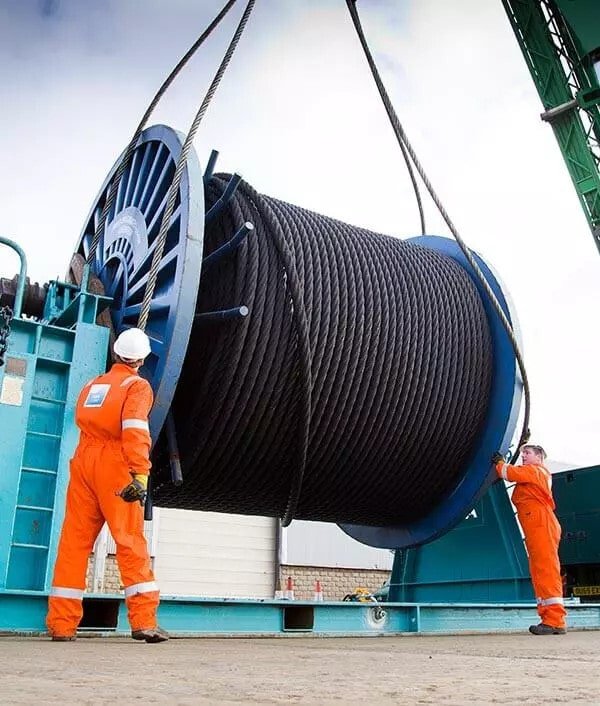
Dive Deeper: An Inside Look at Protection
When I started in this business, ropes were mostly just steel and grease. Now, the technology we can apply is much more advanced. These treatments make a huge difference in performance.
Galvanization: The First Line of Defense
As I mentioned before, galvanizing means coating the steel wires with zinc. We use a hot-dip process, which creates a thick, durable layer. This zinc coating is “sacrificial.” It means the saltwater will attack the zinc before it attacks the steel. It’s a simple, effective, and cost-efficient way to add years to a rope’s life. This is the minimum protection you should accept for any marine rope.
Plastic Impregnation: The Ultimate Protection
This is a more advanced feature that we offer on our high-performance ropes. We take a finished steel wire rope and force a special polymer plastic into it under high pressure. This plastic fills all the empty spaces between the wires and strands, right down to the core.
This process does three important things:
- Seals out contaminants: It creates a complete barrier. Saltwater, dirt, and grit cannot get inside the rope to cause internal corrosion and wear.
- Locks in lubrication: The factory lubricant is permanently sealed inside, where it is needed most.
- Reduces internal friction: The plastic acts as a cushion between the strands. As the rope bends and flexes, the strands slide on the plastic cushion instead of grinding against each other.
| Feature | Standard Galvanized Rope | Plastic Impregnated Rope |
|---|---|---|
| Internal Corrosion Risk | Moderate to High | Very Low |
| Fatigue Life | Standard | Significantly Increased |
| Lubricant Retention | Fair (can be washed out) | Excellent (sealed in) |
| Abrasion Resistance | Good | Excellent |
For critical applications like crane ropes, plastic impregnated wire rope provides the longest and most reliable service life.
What Certifications Should You Look For When Buying Marine Wire Rope?
A certificate is not just a piece of paper. It is your guarantee of quality, safety, and compliance. Knowing which certificates matter can protect your crew, your cargo, and your business.
Always get a manufacturer’s test certificate with the actual breaking load. More importantly, look for approvals from a classification society like DNV or ABS if required. Compliance with standards like EN12385 is basic.

Dive Deeper: Decoding the Paperwork
Over the years, I’ve worked with buyers from all over the world. From Australia to Russia, they all share one common need: proof of quality. Here is what you should ask for.
Manufacturer’s Test Certificate (MTC)
This is the most basic document. Every single rope we produce comes with one. It should never be a generic certificate for a “type” of rope. It must be for the specific rope you are buying. It will list:
- The rope’s exact diameter.
- The construction (e.g., 6×36).
- The material (e.g., Galvanized Steel).
- The actual breaking load achieved during destructive testing.
If your supplier cannot provide this for your specific rope, find another supplier.
International Standards (ISO & EN)
These are standards that define how to make and test rope. EN12385 is a European standard for steel wire ropes that is recognized globally for its high quality requirements. When a rope is compliant with EN12385-4, it means it was made for general lifting applications (like cranes) and meets a very high safety and quality level. Our ropes meet this important standard.
Classification Society Approvals
For many marine applications, a ship’s insurance and registration depend on approval from a classification society. These are independent organizations that set technical standards for ships and equipment.
If your rope is for a critical system (like a crane or davit) on a classed vessel, you will need a rope with a certificate from one of these societies.
| Classification Society | Common Region / Origin |
|---|---|
| DNV | Europe / Global |
| ABS | Americas / Global |
| RMRS | Russia / CIS Countries |
| BV | France / Global |
| LR | United Kingdom / Global |
We have experience with all these bodies. If a client needs a rope with a DNV or ABS certificate, we can manage the inspection and certification process. This is a key part of our service for our export clients.
Conclusion
Selecting the right marine wire rope is crucial for safety and efficiency. Always match the material, construction, and certification to its specific job and the working environment.

